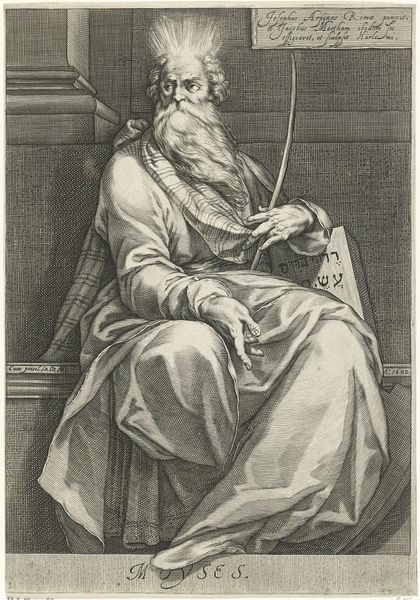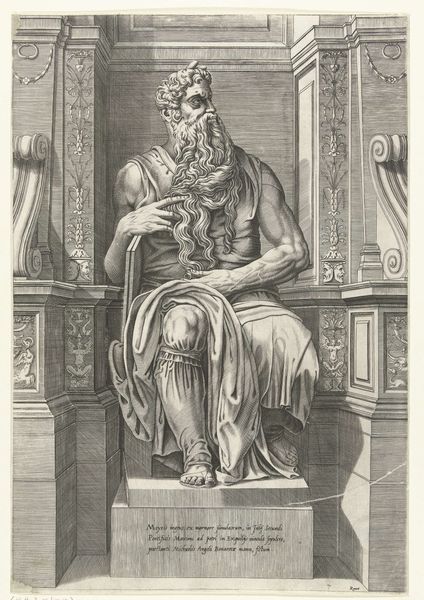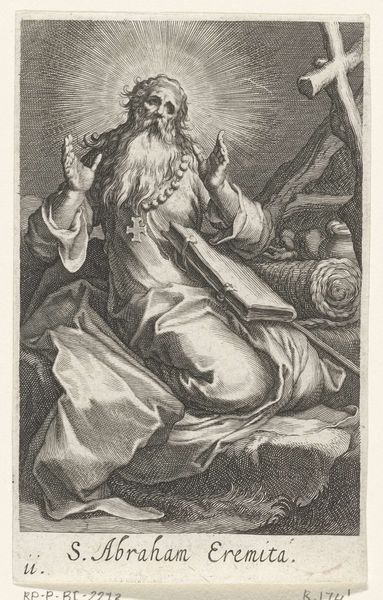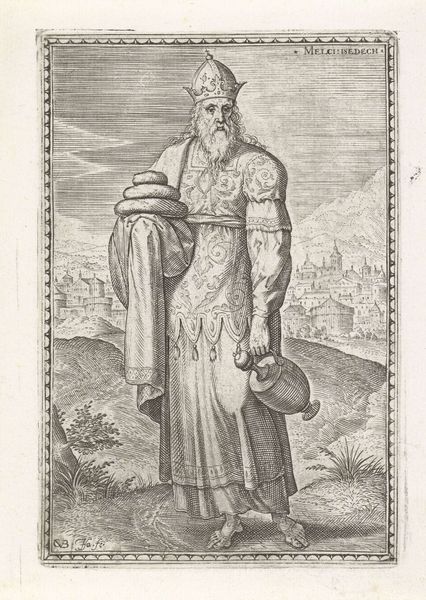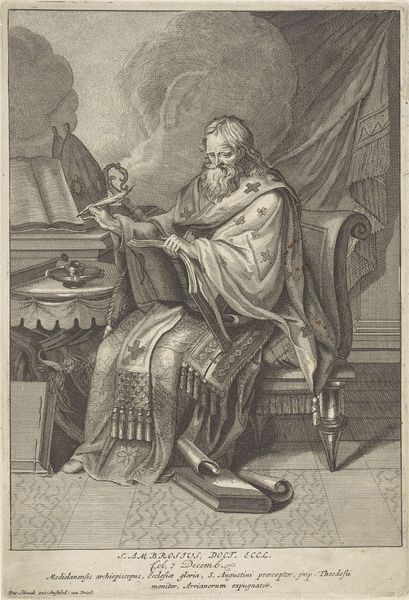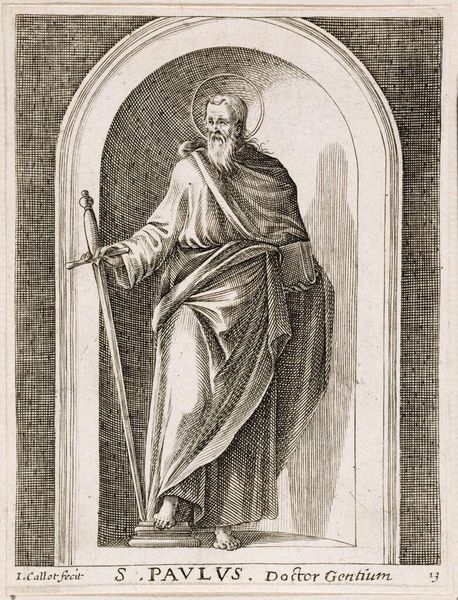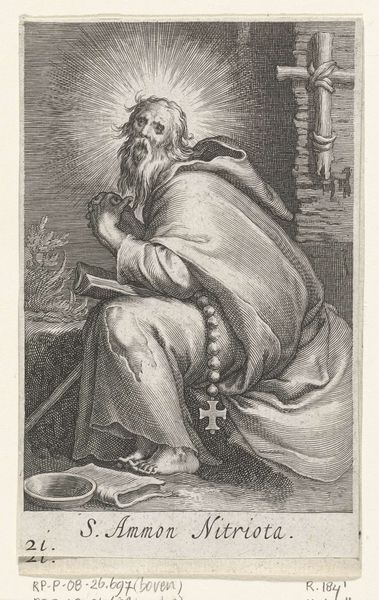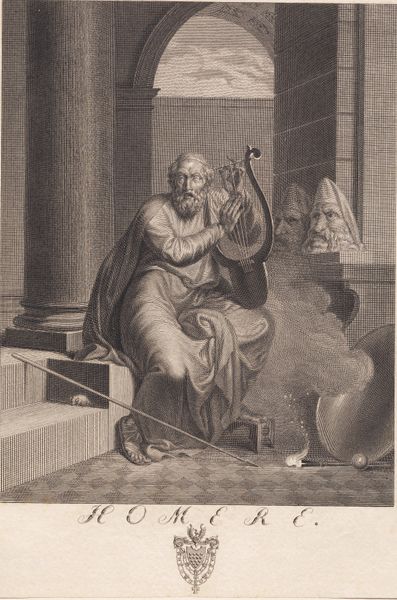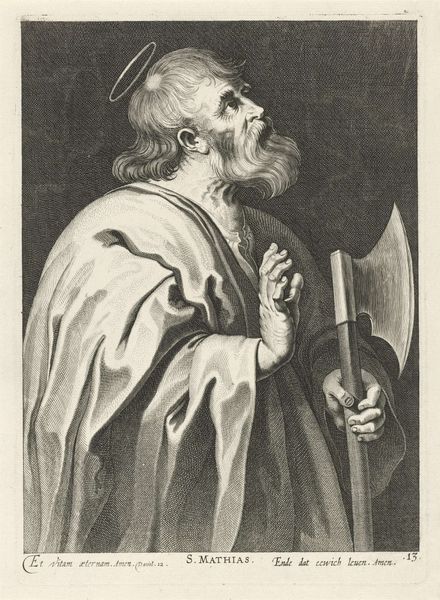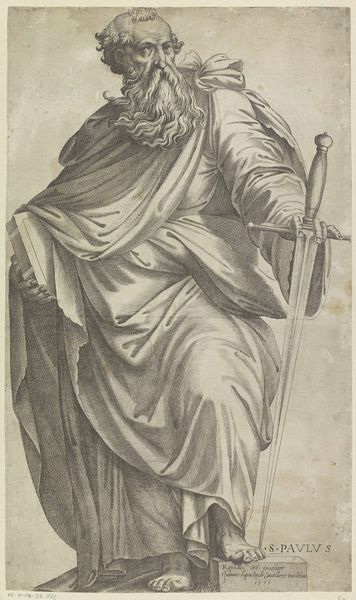
print, engraving
#
portrait
#
baroque
# print
#
figuration
#
portrait reference
#
line
#
history-painting
#
engraving
Dimensions: height 310 mm, width 218 mm
Copyright: Rijks Museum: Open Domain
Editor: This is Jacob Matham’s "Aaron," an engraving from around 1600 to 1604. The detail achieved through the line work is striking, especially in the rendering of fabrics and textures. How do you interpret this work, focusing on its formal elements? Curator: Observe the meticulously rendered lines defining form and texture. Notice how the artist employs varying densities of hatching and cross-hatching to create depth and volume in Aaron's garments. How does this level of detail contribute to your experience of the work? Editor: It creates a sense of weight and substance, doesn't it? The folds of the robes seem almost tangible. And the ornamentation feels very intricate... It gives it all a grandeur. Curator: Precisely. Now, consider the composition: the figure is centrally positioned, dominating the pictorial space. The subtle play of light and shadow across his face directs our gaze and endows him with an almost regal solemnity. How does Matham balance the figure's static pose with a sense of dynamism? Editor: I see what you mean! Although Aaron is sitting, the swirling smoke, the texture on his sleeves, plus that flowering rod introduce a kind of motion or implied motion in this otherwise stately and somewhat formal portrait. Curator: Indeed. And Matham uses line to convey so many qualities—weight, shadow, substance—truly exquisite and intentional. Editor: Looking closely, I've noticed elements that were less apparent at first. Thank you for offering this new perspective! Curator: It’s been my pleasure. Considering formal structures in this way enhances our appreciation for the artistry involved.
Comments
No comments
Be the first to comment and join the conversation on the ultimate creative platform.
